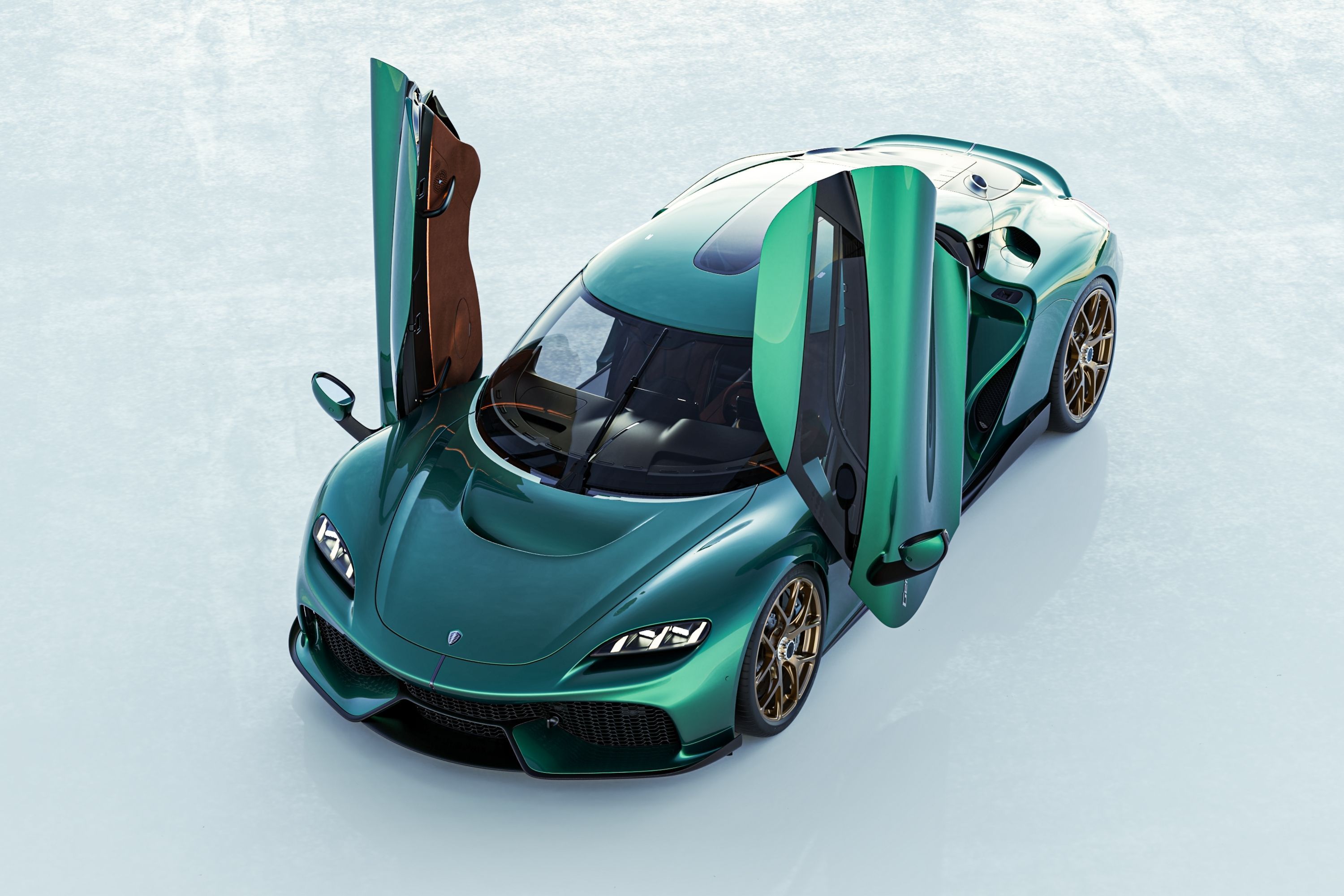
When the Koenigsegg Gemera was revealed, we were astonished by its ground-breaking 1,700 horsepower output. It sourced such from a twin-turbocharged 2.0-liter three-cylinder engine dubbed the Tiny Friendly Giant (TFG) together with three complex electric motors. With time, Koenigsegg has detailed aspects of the powertrain, such as the six-phase inverter called David. This piece of technology is one of a few technical marvels that it is developing entirely in-house.
The next piece of its drivetrain puzzle to be detailed is the Quark E-motor, an ultra-light, ultra-compact electric motor with big potential. This compact unit weighs just 66 lbs, can fit in a backpack, and produces 335 hp and 442 lb-ft of torque. Measuring 11.9 inches tall, 13.1 inches wide, and just 4.4 inches long, the Quark motor is incredibly compact, as can be seen in the supplied images showing it alongside your average soda can.
Koenigsegg's goal for the Quark E-Motor was to create a piece of technology that could take its Gemera to the next level of downsizing. The automaker explains that the foundation of its motor sources inspiration from both radial and axial flux motor principles which is why it has given it the 'Raxial Flux' moniker. By mating the best of the radial and axial layouts, the Quark can provide the best torque to power-to-weight-ratio figure in the industry.
But Koenigsegg doesn't want to keep the innovation to itself. It wanted to create a solution that other manufacturers can use with benefits that include a low mass and volume, and high torque. The Swedish firm states that industries such as EV manufacturers, aerospace, marine, and vertical take-off and landing (i.e helicopters) will see interest in this unit.
The Quark E-motor is based on the principles of magnetism, materials, cooling, and packaging. This is the motivation behind the name which refers to the only elementary particle that can experience all four fundamental forces.
Electric Motor Design Lead Dragos-Mihai Postariu explains, "the Quark is designed to bolster the low-speed range of the Gemera, [and] where you need it, for brutal acceleration. The ICE then focuses on the high-speed range. What this means in terms of performance for the Gemera is a big power surge followed by a continuous record-speed push to 400 km/h without any torque or power losses."
Using this format, the design team was also able to create a technology that sets a benchmark in packaging. But the Quark motor is also remarkably versatile. In the Gemera, the TFG engine powers the front axle, despite being mid-mounted, while the rear is driven by a twin-electric motor setup.
In this, Koenigsegg combines the David inverter, its planetary gear sets, and two Quark motors to form the 'Terrier' drive unit. The brand argues that this unit is well-suited for various EV applications, and derives its name from the energetic and fearless nature of the dog breed.
What makes this so special is its reliance on only one six-phase inverter. Each Quark motor only needs to source energy from three phases which means that the component's dimensions and mass are significantly reduced. Thanks to its high-output capabilities, the Terrier only needs to be connected to a small low-ratio planetary gear set. This unit is mounted to the chassis via an elasto-bolt system, meaning weighty subframes may also be a thing of the past. Each electric motor acts independently, too, meaning the Terrier provides genuine torque vectoring capabilities.
